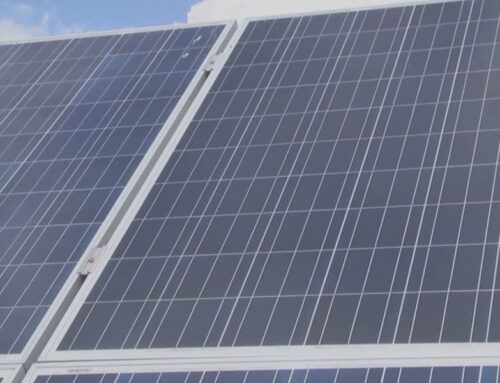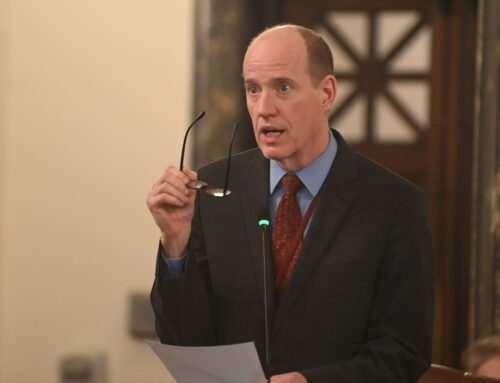Hidden Costs, Rusting Relics: Decommissioning Wind Turbines In The US
December 23, 2024
The U.S. Wind Turbine Database contains more than74,695 wind turbines built since 1980, spread between 1,699 wind power projects in 45 states. However, thousands of wind turbines are reaching the end of their operational lifespan and need to be either repowered to make way for updated (often larger) turbines or entirely decommissioned to allow for new uses of the land they occupy. Unfortunately, there is no uniform legal framework to regulate the steps involved, nor is there an accepted industry-wide set of best practices, and the environmental costs are considerable.
America’s Decaying Wind Turbine Infrastructure
Many first- and second-generation turbines with capacities between 0.5 and 1 MW are being retired and decommissioned as newer models—some with capacities of up to 3.5 MW—take their place. Complete decommissioning can include felling or dismantling the turbines, partially or wholly removing the turbine foundations and underground cables, removing the ground-level facilities, and restoring the land to a usable state.
One issue with decommissioning turbines is how to dispose of turbine components. Above ground, the towers, hubs, and some internal parts of wind turbines are made of easily recyclable metals, accounting for 86%-94% of the weight of each unit. In contrast, blades and other components, which account for 6%-14% of the weight, are made of composite materials that are more difficult to recycle. Foundations and underground cables made of concrete, plastic, and metal can usually be recycled but are often left underground when a project is discontinued.
The rare earth elements used in permanent magnets in wind turbine generators are difficult to retrieve for reuse. Last but not least, wind turbines’ large blades are constructed from fiberglass, carbon fiber, or epoxy resin, rendering conventional recycling procedures ineffective. New recycling methods are limited in availability and costly, which ironically means that landfilling is currently the most cost-effective disposal option.
Environmental and Economic Impacts of Wind Turbine Waste
Landfilling presents an escalating environmental threat. Blades are frequently buried in fragments in several landfills throughout the Great Plains, transforming sites in Wyoming, Iowa, and South Dakota into wind turbine graveyards. By 2050, the cumulative decommissioning material from wind turbines could reach 133 million tons. On average, 3,000 –9,000 blades are being taken out of service per year in the United States, and that number is expected to increase to 10,000–20,000 blades per year by 2040. While landfills may not emit hazardous compounds, non-biodegradable debris is occupying more and more space.
Alternative waste management methods are available but have not attained market dominance. Mechanical recycling processes grind blades into materials for construction or fuel, while thermal decomposition converts fiberglass into new composite products. These energy-intensive processes generate greenhouse gas emissions, which may outweigh the benefits of the recycled products they create.
Companies like Global Fiberglass Solutions have developed techniques for recycling fiberglass composites into materials required for construction and infrastructure projects. However, to be cost-effective, these solutions still require tax credits and other assistance. Potential solutions involve substituting non-recyclable blades with blades made from alternative materials.
The National Renewable Energy Laboratory has developed turbine blades constructed from recycled plant substances using sugars extracted from wood, plant residues, used cooking oil, and agricultural waste. German-based Siemens Gamesa company is working on bringing a Recyclable Blade to the marketplace. The Zebra (Zero Waste Blade Research) consortium announced a breakthrough in the pilot manufacturing of a recyclable blade in October 2024.However, at least for now, turbine blades made from more readily recyclable materials are more expensive than conventional blades, and wind projects already face considerable financial strain due to heavy up-front capital costs and high interest rates. Until engineering breakthroughs result in fully recyclable blades that can cut costs, widescale adoption remains unlikely.
Moreover, blades and recycling are not the only environmental issues involved. According to the Wind Energy End-of-Service Guide published online by the Office of Energy Efficiency and Renewal Energy, “While foundations and cables can be recycled or repurposed, they are typically left in place in the ground below a depth (usually 3–5 feet) that is agreed upon by the community/landowner and project owner(s) due to environmental impacts associated with complete removal. Environmental impacts during decommissioning/full removal of below-ground infrastructure can include noise disturbances, ground disturbance, and additional carbon emissions. Additional environmental concerns related to full foundation removal may include compromised site stability, erosion, or unwanted pathways for surface and sub-surface water – due to inappropriate backfilling of the site.” The Guide also notes that decommissioning expenses per turbine vary between $114,000 and $195,000, often incurred by the project owner.
How Can the United States Improve?
Currently, the disposal of wind turbine waste is regulated by the localities and states hosting wind turbine projects. Texas, home to the nation’s largest wind capacity, mandates that operators decommission turbines on leased land. Colorado proposes linking federal tax credits to the removal of retired turbines. In some other states, financial assurances, such as bonds, are often required but released only after decommissioning is complete per the standards specified in the applicable regulations.
As is often the case when new technologies come to market, unintended downstream consequences are not always immediately obvious to the players. Enthusiasm for clean energy initially pushed the first wind turbines into existence in the U.S. without considering the environmental and monetary costs that would be involved in either upgrading or bringing projects to a close later in their life cycle. This also means that the original projections of cost-per-kilowatt for wind-generated electricity did not calculate the actual cost of the product being brought to the market. The United States wind energy industry needs to address this, among other things, by adjusting tariffs to reflect the added costs of purchasing parts that actually can be recycled, covering the costs of repowering as well as decommissioning projects.
Search
RECENT PRESS RELEASES
Related Post



